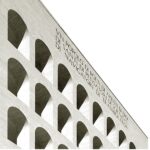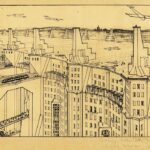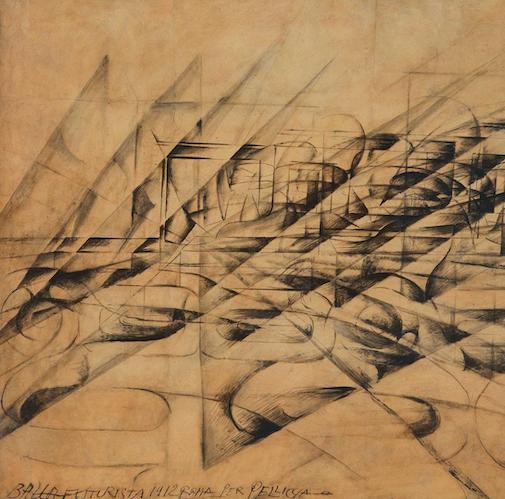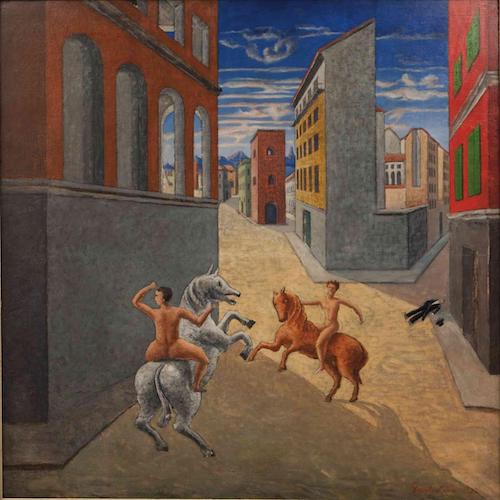
Italian style across art and design
7 June 2024
122 città. Da Boccioni a Pistoletto
16 September 2024Fondazione Cirulli, in cooperation with the Museum of Modern Art of Troyes (France), is pleased to present Italia Veloce: Arts et design au XX siècle. The exhibition takes place in the French museum on the occasion of the Paris Summer Olympics and it is open to the public from June 22 to October 20, 2024.
The exhibition features more than 130 artworks belonging to Fondazione Cirulli's collection which is put in dialogue with Collection Pierre and Denise Lévy of the Museum of Modern Art. It is a journey through the first sixty years of the XX Century and highlights the features of modernity and innovation which define our Country.
Over the last century artists tried their hands experimenting with different type of media: paining, sculpture, photography, collage and photocollage, advertising graphics, design projects and objects. The exhibition displays all these different media in order to convey the richness and complexity of Italian creative experimentation.
The exhibition is curated by Jeffrey T. Schnapp and Juliette Faivre- Preda and it is divided into six sections for a total of 135 artworks.
Among the featured artists Giacomo Balla, Umberto Boccioni, Erberto Carboni, Luigi Russolo and Mario Sironi, just to name a few.


Italia Veloce exhibition opens with the researches conducted by Futurist artists who glorify the modern world, in particular cities, machines and speed.
Metaphisical painting is conducted through some emblematic works of the period, including a Paesaggio Urbano by Sironi and a metaphysical city by Luigi Zanini.
A large section explores decorative arts and design which testify the will of merging art with everyday life. The compenetration between art and life was theorized in 1915 by Futurist artists Giacomo Balla and Fortunato Depero in the Manifesto Reconstructing the Universe.
Beyond painting and sculpture, the quest of modernity is expressed by the diffusion of art in every field of daily life: music architecture, theatre, cinema, advertising, furniture.
The post - World War II years are marked by a radical change in the design field as a consequence of the use of new materials: a whole new series of objects which symbolize the year of the economic boom are made in plastic, cheap and accessible. These objects became affordable by larger groups of consumers and that is when design objects (telephones, TVs, scales..) by designers such as Marco Zanuso and Richard Sapper became part of Italian everyday life.
In the 1950s Erberto Carboni, Italian designer and advertiser, designed the logo for RAI (Italian company of radio and television), while RAM used the collage technique and metaphysical aesthetics to create one of the first Italian tourism campaign.
Art becomes a social practice in which designers and artist work in synergy with Italian companies and lay the foundation of so-called Made in Italy.
The exhibition ends with a section dedicated to Italian cinema: from the colossal Cabiria to Neorealism and aeteur cinema, ending with a selection of Federcio Fellini's most famous films scenographies designed by Oscar winner Danilo Donati.
June 22 - October 20, 2024
ITALIA VELOCE: art et design au XX siècle. Selection from Fondazione Massimo e Sonia Cirulli 's Collection
Museum of Modern Art, Troyes (FR)

